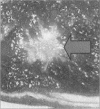Abstract
Two hundred and twenty beef calves were used in an experimental study to determine the occurrence of injection site lesions at slaughter (15 to 18 months of age) following subcutaneous and intramuscular injection of various products into the top hip (top butt), thigh (round), and neck or rib of calves at birth, branding, or weaning. Products tested were: 2 different preparations of selenium; a 2-way, a 7-way, and an 8-way clostridial bacterin; 2 combination 7-way clostridial and Haemophilus somnus bacterins; 2 H. somnus bacterins; 2 different 4-way modified-live viral respiratory vaccines; a 4-way killed viral and H. somnus vaccine; and penicillin, florfenicol, ceftiofur, trimethoprim-sulfa, and tilmicosin. The occurrence of lesions, number of steaks affected with lesions, the trim weight of lesions, the histological class of lesions, and the estimated economic losses are described. Generally, products administered subcutaneously in the neck produced minimal tissue damage and economic losses.
Full text
PDF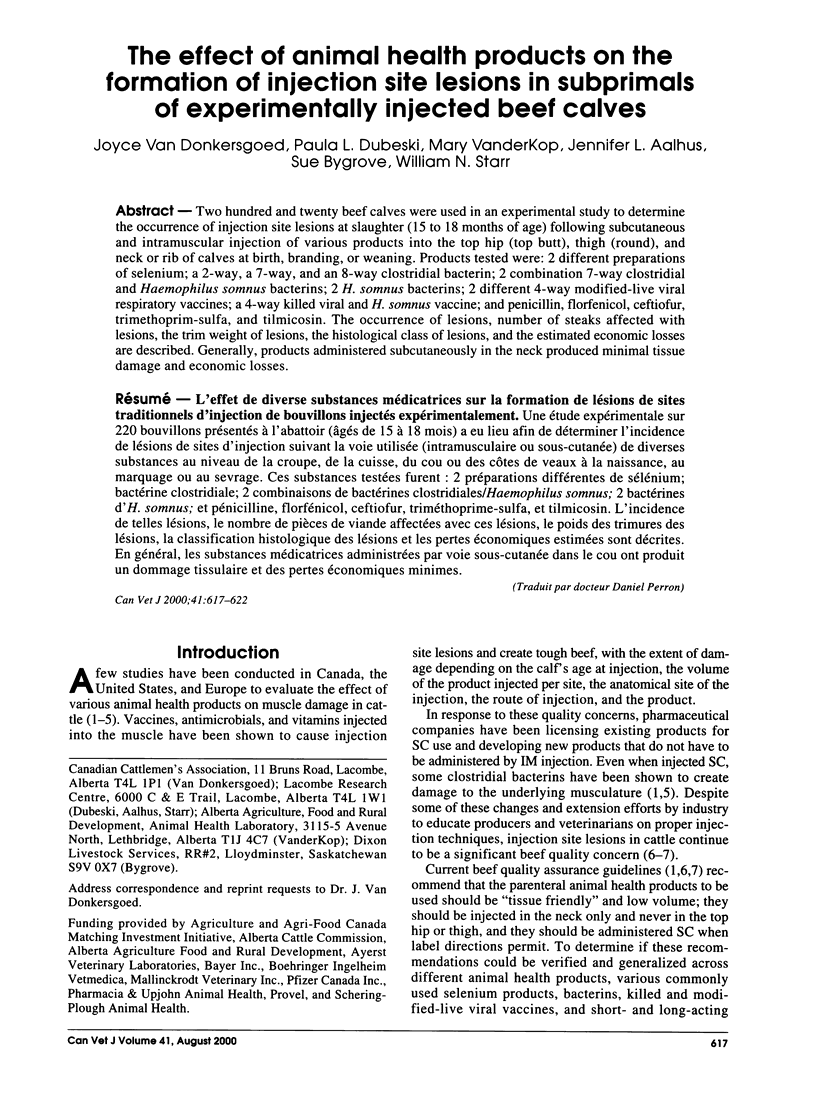
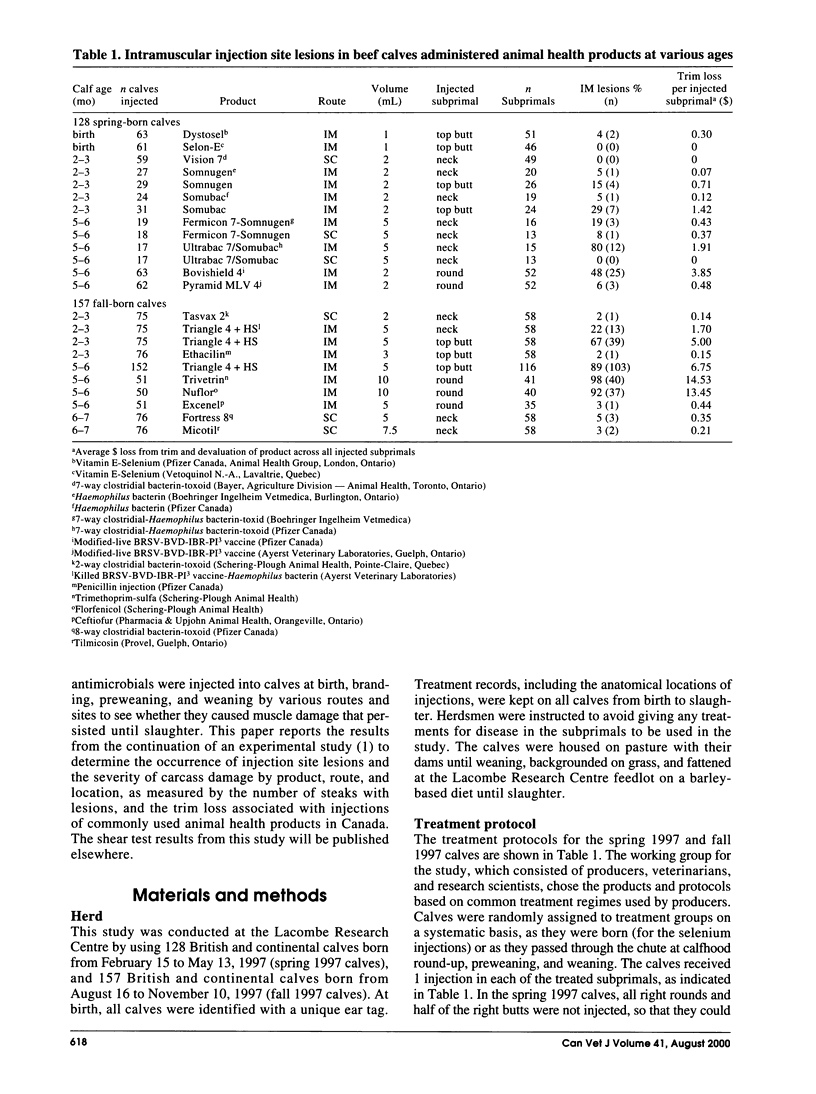
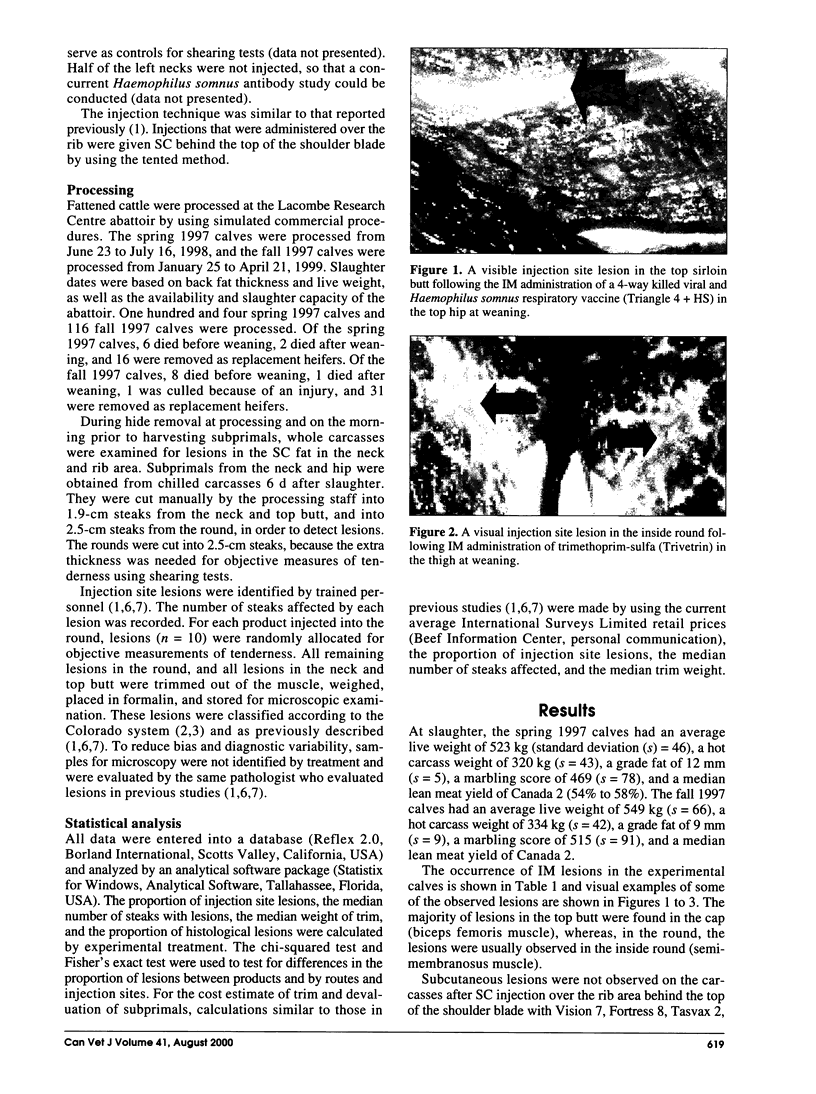
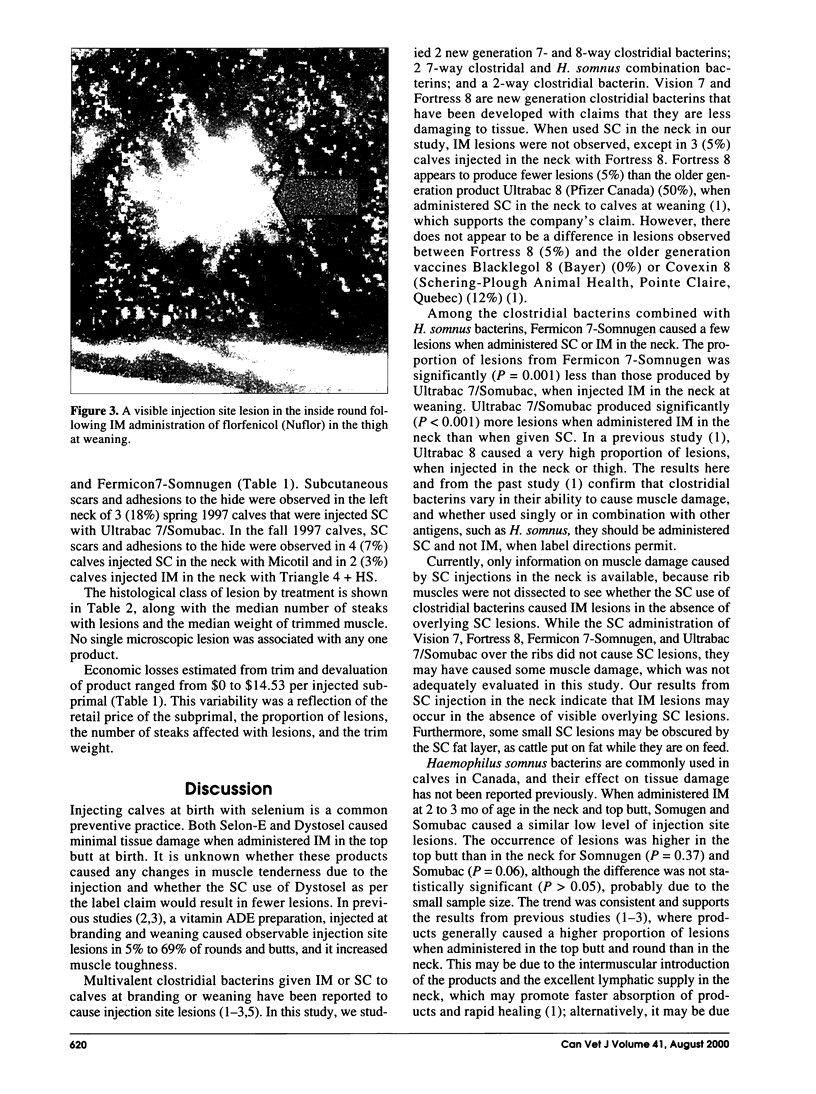
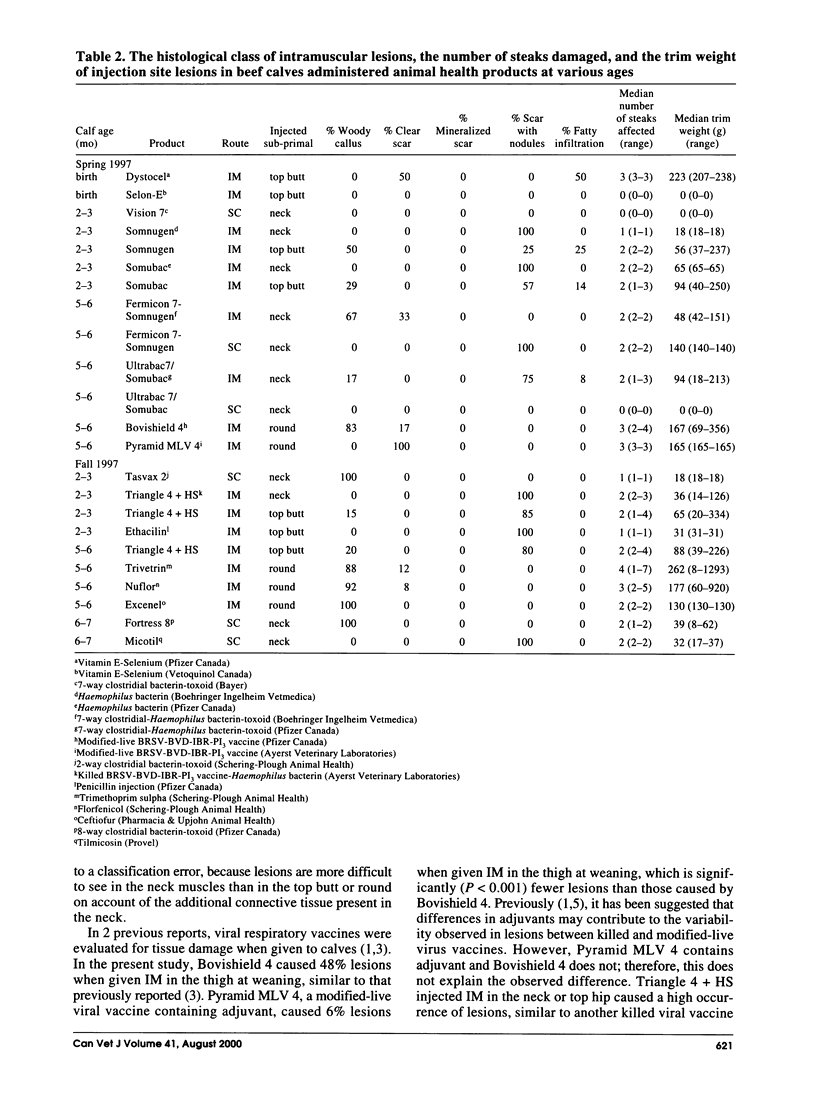
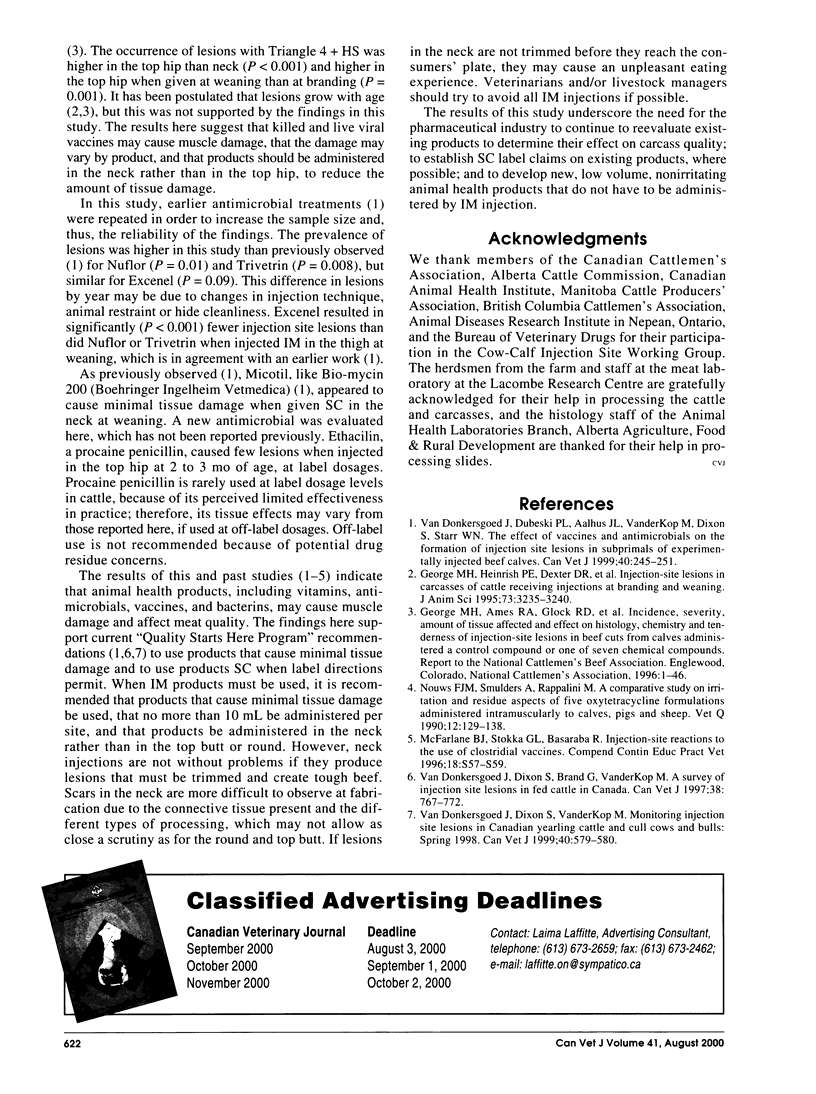
Images in this article
Selected References
These references are in PubMed. This may not be the complete list of references from this article.
- George M. H., Heinrich P. E., Dexter D. R., Morgan J. B., Odde K. G., Glock R. D., Tatum J. D., Cowman G. L., Smith G. C. Injection-site lesions in carcasses of cattle receiving injections at branding and at weaning. J Anim Sci. 1995 Nov;73(11):3235–3240. doi: 10.2527/1995.73113235x. [DOI] [PubMed] [Google Scholar]
- Nouws J. F., Smulders A., Rappalini M. A comparative study on irritation and residue aspects of five oxytetracycline formulations administered intramuscularly to calves, pigs and sheep. Vet Q. 1990 Jul;12(3):129–138. doi: 10.1080/01652176.1990.9694257. [DOI] [PubMed] [Google Scholar]
- Van Donkersgoed J., Dixon S., Brand G., VanderKop M. A survey of injection site lesions in fed cattle in Canada. Can Vet J. 1997 Dec;38(12):767–772. [PMC free article] [PubMed] [Google Scholar]
- Van Donkersgoed J., Dixon S., VanderKop M. Monitoring injection site lesions in Canadian yearling cattle and cull cows and bulls: Spring 1998. Can Vet J. 1999 Aug;40(8):579–580. [PMC free article] [PubMed] [Google Scholar]
- Van Donkersgoed J., Dubeski P. L., Aalhus J. L., VanderKop M., Dixon S., Starr W. N. The effect of vaccines and antimicrobials on the formation of injection site lesions in subprimals of experimentally injected beef calves. Can Vet J. 1999 Apr;40(4):245–251. [PMC free article] [PubMed] [Google Scholar]





